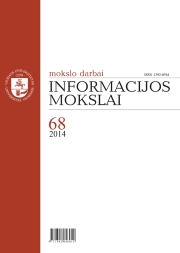Informaciniai nutylėjimai: priežastys ir pasekmės
INFORMATIVE VEILING: CAUSES AND CONSEQUENCES
Author(s): Mantas MartišiusSubject(s): Media studies
Published by: Vilniaus Universiteto Leidykla
Summary/Abstract: In the modern society, the media play an important role. They not only inform, educate and provide entertainment, but also provide to the people the general context. Creating the news, the media shape the public agenda. The information provided by the media determine the quality of society’s discourse level and affect the political, economic, and social issues. The article theoretically proposes a new aspect of the examination, which is the information veiling. Informative veiling is an important information suppressing, which affects understanding of the context of general events. The information veiling can be intentional or accidental, but the effect will be the suppressing of important knowledge, data or facts and their unbalanced awareness. The purpose of the article is to examine analytically and theoretically the phenomenon of information veiling, linking it with propaganda and the context formation in general. In the deliberate or accidental information veiling, the result appears to be similar. Such information creates a weakly informed audience which is not using the valuable information for making the most effective decisions. If the public space is dominated by a large percentage of information veiling news, in society evolve myths, false assessments, and incorrect conclusions. In order to reduce the influence of information veiling, the audience should be careful as to the source of information and its expected effect. Examination of the media interest in the material reduces its propagandistic effect, and a more critical approach to the media coverage could reduce the information influence on the audience. On the other hand, we have to admit that it is a more idealistic approach rather than the reality.
Journal: Informacijos mokslai
- Issue Year: 2014
- Issue No: 68
- Page Range: 127-146
- Page Count: 20
- Language: Lithuanian

